Hunter Edge
Atrailersailer with get up and go under sail or power
Warren Luhrs and his design team at Hunter have mastered the concept of "user-friendly." In their relentless pursuit of making sailing more accessible to nonsailors, they have consistently introduced innovative features that make sailing easier. From stainless steel arches that remove the clutter of the traveler and mainsheet from the cockpit, to maintenance-free Flexi teak, to the company's trademark B&R rigs that open up cockpit space and access by eliminating the backstay. With apologies to Bill Lee, Hunter's philosophy might just be summed up as "Fun is fine." Sailing doesn't need to be intimidating and there's no reason it shouldn't be downright enjoyable. 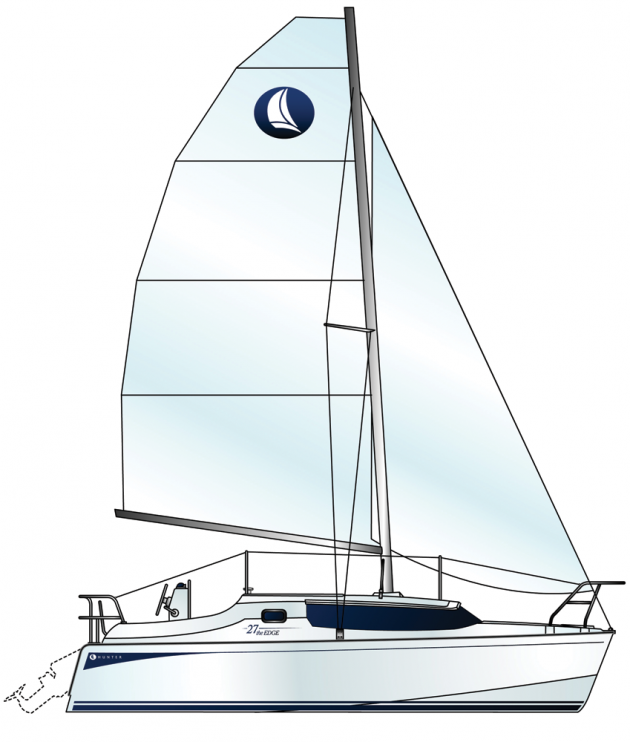
Now Hunter has introduced the Edge, a 27-foot mini-motorsailer that sails surprisingly well and also speeds along like a runabout under power. Why would Hunter launch a boat that gobbles up fuel into this energy wary market? Because Hunter refuses to accept the idea that sailing is withering and that sailboats must be defined by traditional parameters. It's true that sailboats represent a small fraction of the overall boating industry and new sailboat sales are lagging. So what to do about it? Recruit new sailors, draw them over from the dark side. That's right, help powerboaters see the light. These new sailors will learn to appreciate the magic of sailing, but in the mean time they will still appreciate zipping across flat water at 18 knots. Hunter is betting that wake boarders and sailors are not mutually exclusive, that they may just represent the combined future of the sport. And I'd never bet against Warren Luhrs.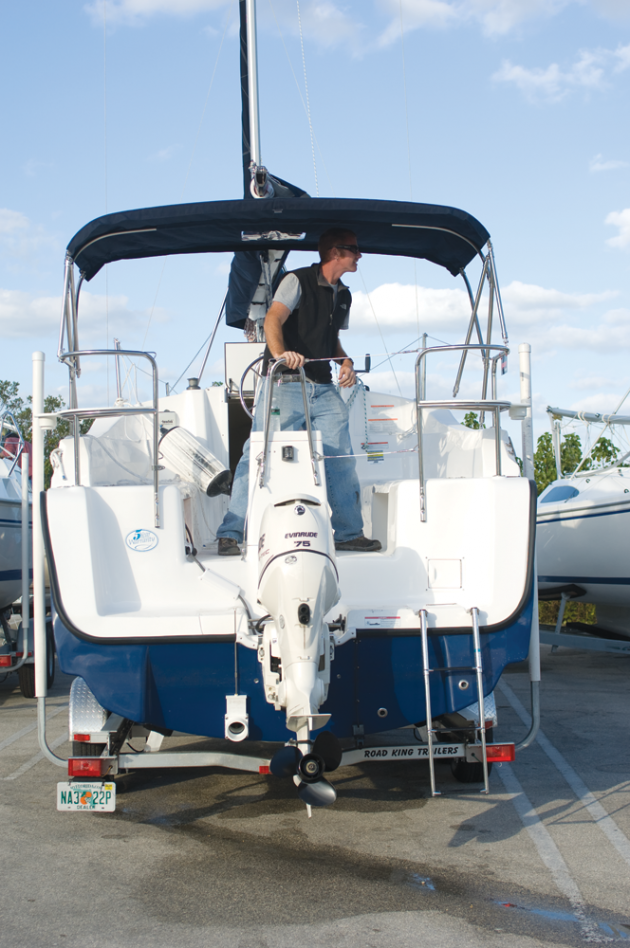
"Time is more precious than ever," said Steve Pettengill, a vastly experience sailor with one of the best jobs, and definitely the best job description, in the industry. He's Hunter's director of offshore testing. We were drifting on Biscayne Bay off Miami, about to shift from motoring mode to sailing.
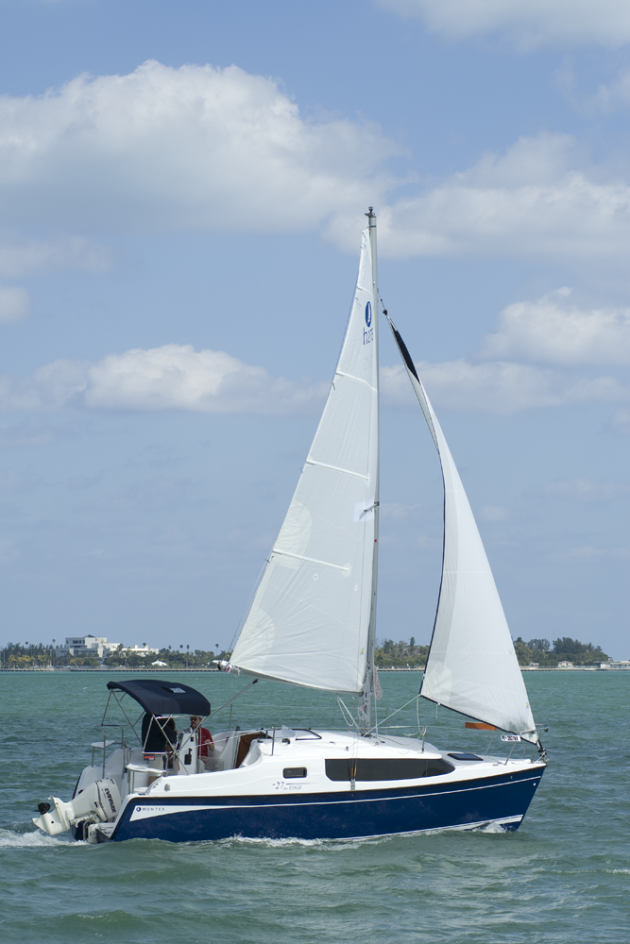
"We still have the need to be on the water but the time we can devote to it is shrinking. That's the beauty of the Edge, you can motor out to where the wind is and then set sail. If the wind dies, you can turn back into a very efficient motorboat in no time at all. The kids want to waterski, you want to sail. Now you can do both in an afternoon."
The details
The Edge is an integrated design that blends the beauty of sailing with the flexibility of a powerboat.Some have called it a sailing hybrid. Pettengill explained that designing the Edge proved to be one of Hunter's most challenging projects.
"We wanted to get it right and really took our time. It incorporates a lot of features: water ballast, a lifting rudder, a kick-up centerboard, the need to be trailerable, the need to perform well." But it's just the kind of project Hunter thrives on and the finished product shows that they did, indeed, get it right.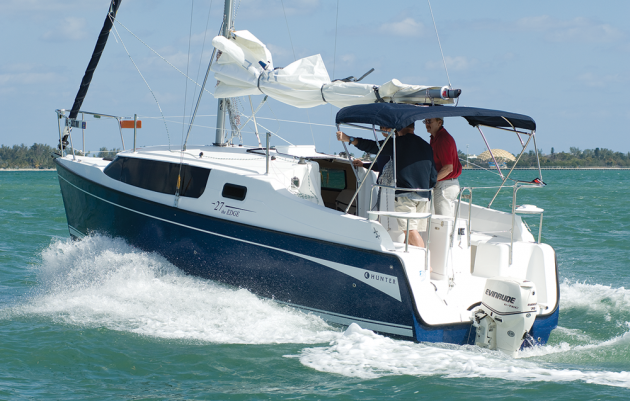
We had just finished putting the Edge through its paces under power. Spinning in an ever-tightening circle I was impressed as the boat maintained speed and excellent steering control. I was reminded of our old ski boat on Higgins Lake in Northern Michigan. Straightening out, I pushed the throttle forward and we easily kicked up onto a plane. The GPS touched 17 knots before I felt guilty and throttled back. The 75-horsepower, 4-stroke Evinrude outboard offered up plenty of power and was remarkably smooth running. The standard engine is 50 horsepower. One very nice aspect of a trailerable boat with a big outboard engine is that for maintenance and repairs you simply haul the boat and the engine to the shop on the trailer.
Now it was time to sail. The transition from power to sailboat took just a few minutes. The process included raising and tilting the engine forward, lowering the rudder and centerboard and allowing the water ballast to fill. Then we hoisted the roachy, square-head main, unfurled the jib and fell away onto a sweet reach. The quiet was nice. So was the 6 knots of boat speed. I confess, 6 knots under sail felt a lot better than 17 knots under power.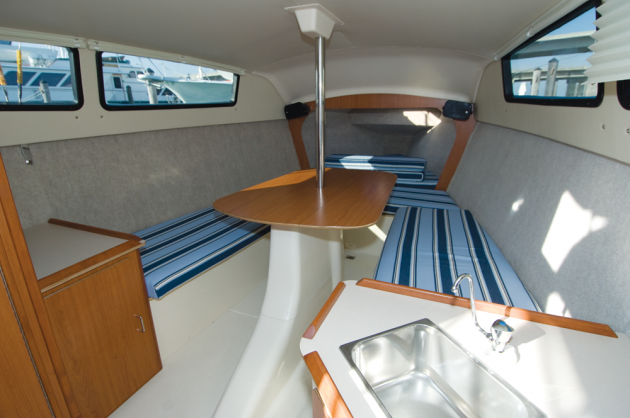
The Edge is built with a solid hull and a cored deck joined on outward flange and through bolted. Structural hull support is provided by a molded grid system that runs throughout the hull. With towing a central aspect of the design premise, Luhrs and his team gave careful consideration to keeping the overall weight down. This is where water ballast makes sense, it's not permanent weight that needs to be hauled down the Interstate. The towing weight is less than 5,000 pounds and the Edge can be pulled behind a decent sized pickup or SUV. Once you get to the ramp, the flat powerboat hull shape is easy to launch. The 33-foot air draft translates into a manageable mast section of around 28 feet. The mast doesn't require a crane or gin pole to be stepped, but it sure helps. 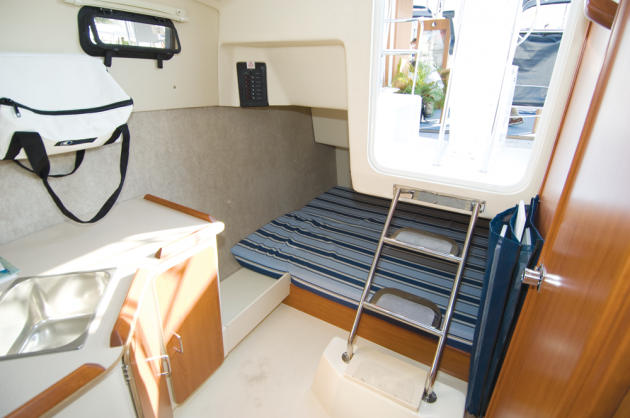
The hull shape is in many ways the key to the Edge's versatility. The wide, shallow V-shape forward and flat beamy aft sections promote easy planing and power and a considerable amount of initial stability under sail. It also allows for the boat to be beached. The centerboard control line leads to a jammer on deck. Board up draft is just 18 inches, ideal for shallow water exploring. Board down draft is nearly 6 feet, giving the Edge some footing when
sailing upwind. 
A lever near the engine throttle controls the water ballast. Up to 1,600 pounds of water weight contributes to stability when under sail. A ballast tank inspection port is located at the base of the companionway steps. When you want to get back into powering mode, the ballast tank is open and the water is sucked out through a Venturi effect.
On deck
The cockpit is surprisingly spacious and, not surprisingly, quite comfortable. Optional transom seats are a must-have item. The walk-through transom provides unfettered access to the water. The wheel is a bit small and the helm seat takes a bit of getting used to. It houses the apparatus for lifting and securing the rudder. The cockpit is uncluttered, as the halyards are on the mast and the small jib is self-tending and controlled by a single sheet on the coachroof. The mainsheet is tacked to a light fitting on the pedestal guard; not the best arrangement. I suspect Hunter will improve on this soon. I am sure the company's engineers are considering something clever. Maybe a lightweight carbon fiber arch with a traveler? Either way, it's a small complaint.
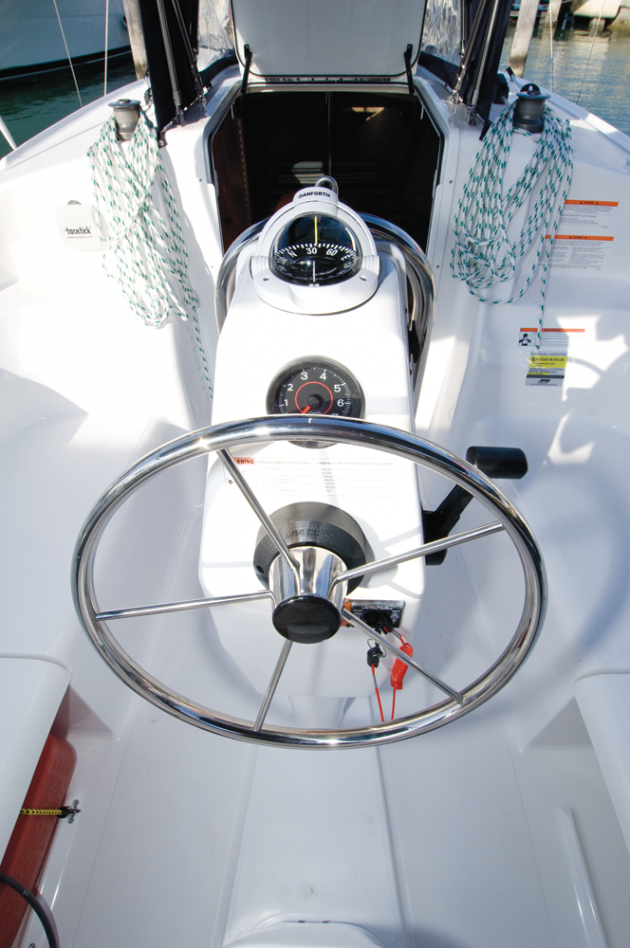
The raised deck is not terribly easy to navigate, but other than raising and lowering the main, you don't need to spend much time there, unless you're just lounging. The small stanchions and lifelines stop at the end of the coachroof. The rigging hardware is ingenious, and easy to set up and take down. A roller furling headsail is standard. There's a decent-sized chain locker forward.
Down below
The interior of the Edge is remarkable-it's hard to believe that you're in a 27-foot trailerable boat. A legitimate double berth is located aft of the companionway ladder, tucked under the cockpit. The small but functional galley is to starboard and includes a stainless steel sink and icebox. A one-burner stove and pressurized water are desirable options. The head is opposite with a practical and green porta potty standard. A through-hull marine head is
an option. 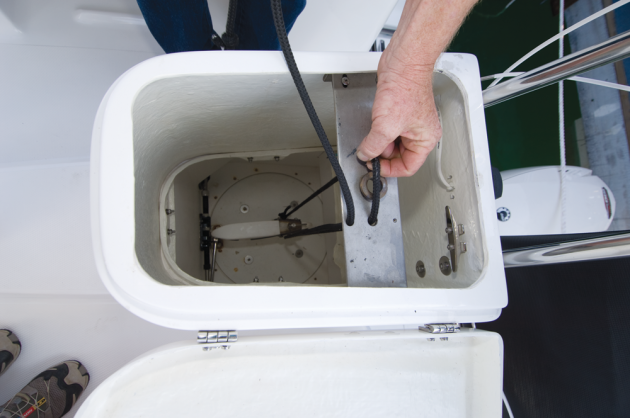
The saloon features a centerline table that conceals the centerboard trunk housing and twin facing settees. There's another double berth forward. There is not much built-in storage, but the boat needs to be light both for performance and trailerability. The interior is bright, thanks to the large portlights and light-colored finish and fabrics.
Under sail
Back on Biscayne Bay, the wind was piping up. My stepson Nick took the helm and Steve hauled in the sheets. We were able to sail relatively close to the wind. There was a bit of weather helm, but the tradeoff was that we were sailing relatively flat. The boat tacked easily, coming through the wind without the bow falling off, something I wondered about. Cracking off onto a beam reach we sped along at 6 knots. Running downwind, the small headsail was hard to fill, but the large main kept us moving well. Jibing over, we headed back north and, as if on cue, the wind eased. I was in a rush to get back to the marina for another boat test appointment.
No problem. We quickly furled in the jib, lifted the rudder using the control line below the helm seat and secured it with a stainless steel pin. We then lowered the engine and fired it up. We dropped the main, easily evacuated the water ballast tank and sped back toward the marina. Steve Pettengill couldn't conceal a grin. Yes, I conceded, there just might be a market for Hunter's new hybrid. Sailing is believing, and so is motoring. ?

Comments